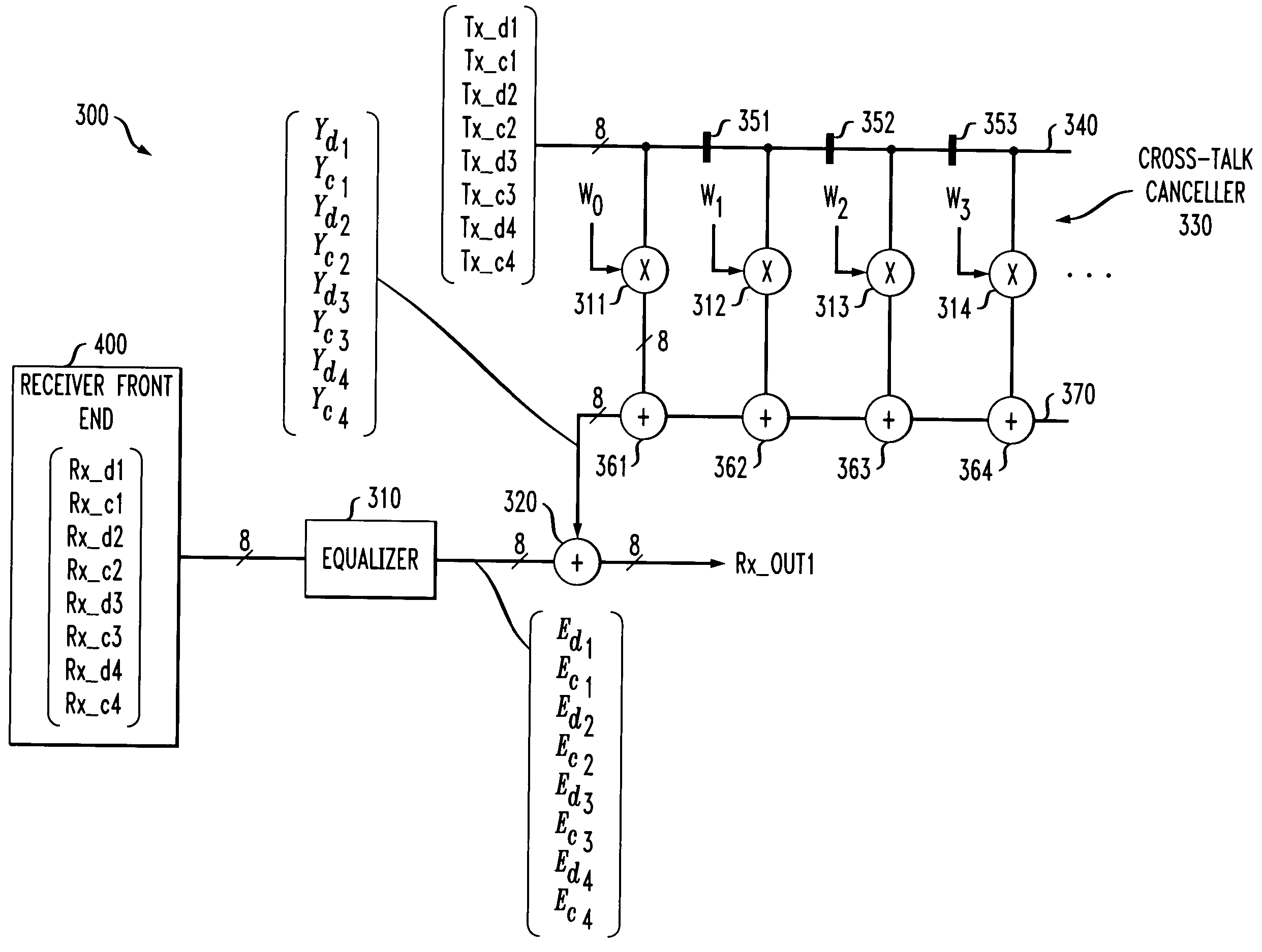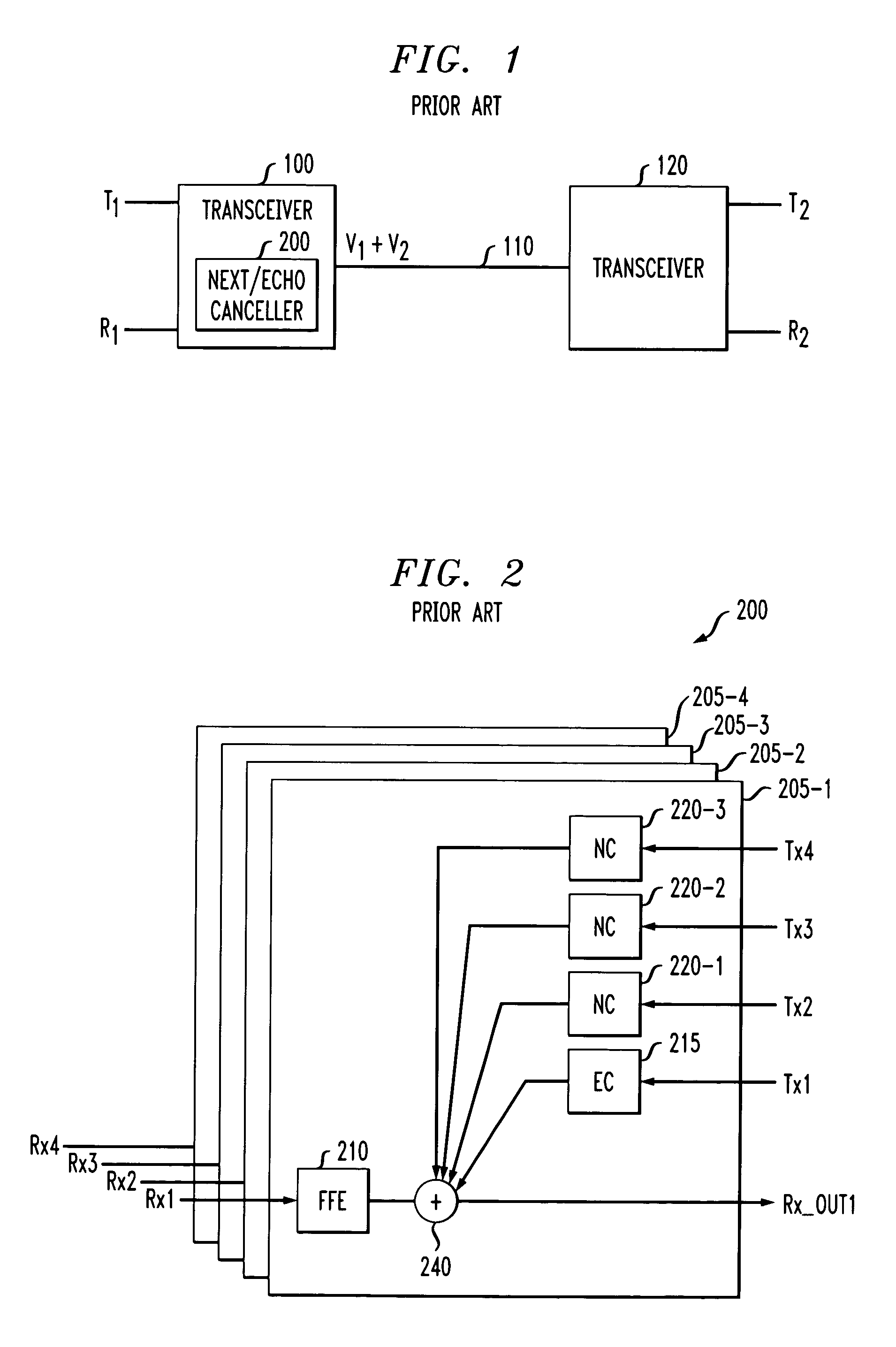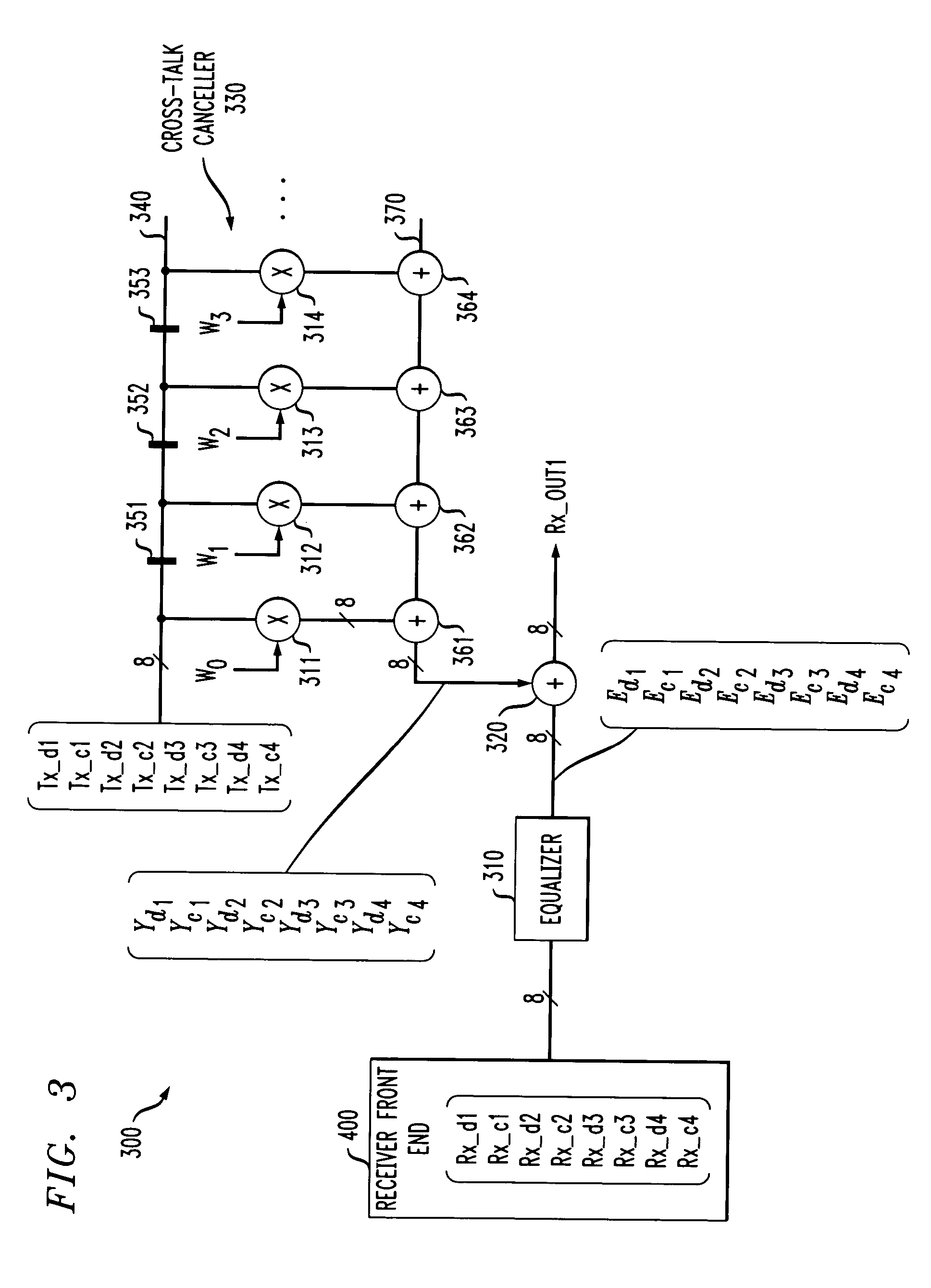Method and apparatus for reducing noise in an unbalanced channel using common mode component
a common mode and channel noise technology, applied in the field of noise removal techniques, can solve the problems of common mode noise affecting the balance of differential signals in twisted pairs, and achieve the effects of reducing noise, reducing noise and cross-talk, and reducing the effect of external noise sources
- Summary
- Abstract
- Description
- Claims
- Application Information
AI Technical Summary
Benefits of technology
Problems solved by technology
Method used
Image
Examples
Embodiment Construction
FIG. 2 illustrates a conventional near end cross-talk and echo canceller 200 that may be employed in the transceivers 100, 120 of FIG. 1. The exemplary near end cross-talk and echo canceller 200 processes four received differential signals, Rx1 through Rx4, each received on a unique twisted pair. As shown in FIG. 2, each of the four received differential signals, Rx1 through Rx4, are processed separately at stages 205-1 through 205-4, respectively. Each cross-talk and echo cancellation stage 205 equalizes the received signal using, for example, a feed forward equalizer 210, in a known manner.
In addition, each cross-talk and echo cancellation stage 205 includes an echo canceller 215 to address the echo crosstalk that is primarily the result of crosstalk on the same twisted pair, such as the twisted pair carrying the received signal Rx1 and the transmitted signal Tx1. As shown in FIG. 2, each cross-talk and echo cancellation stage 205 also includes near end cross-talk and echo cancel...
PUM
 Login to View More
Login to View More Abstract
Description
Claims
Application Information
 Login to View More
Login to View More - R&D
- Intellectual Property
- Life Sciences
- Materials
- Tech Scout
- Unparalleled Data Quality
- Higher Quality Content
- 60% Fewer Hallucinations
Browse by: Latest US Patents, China's latest patents, Technical Efficacy Thesaurus, Application Domain, Technology Topic, Popular Technical Reports.
© 2025 PatSnap. All rights reserved.Legal|Privacy policy|Modern Slavery Act Transparency Statement|Sitemap|About US| Contact US: help@patsnap.com



